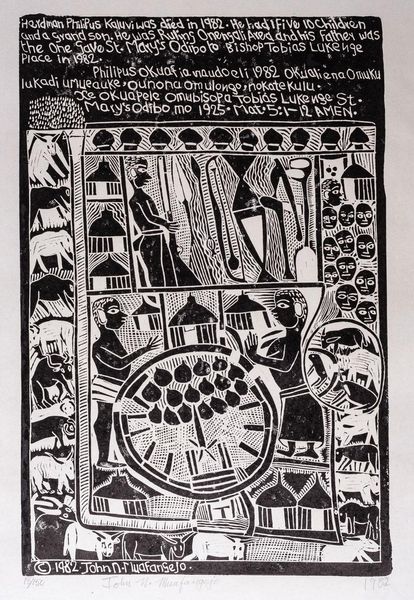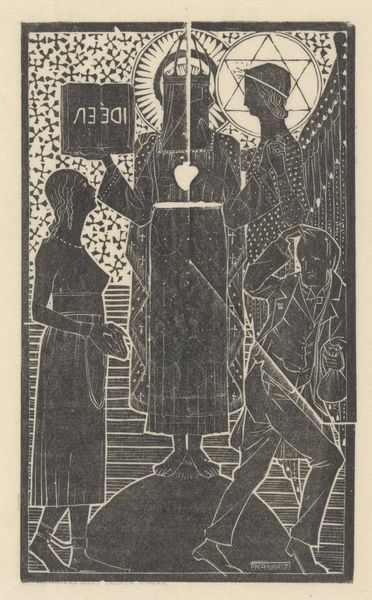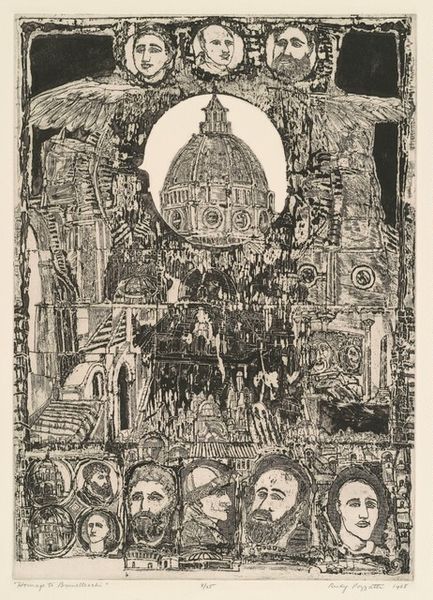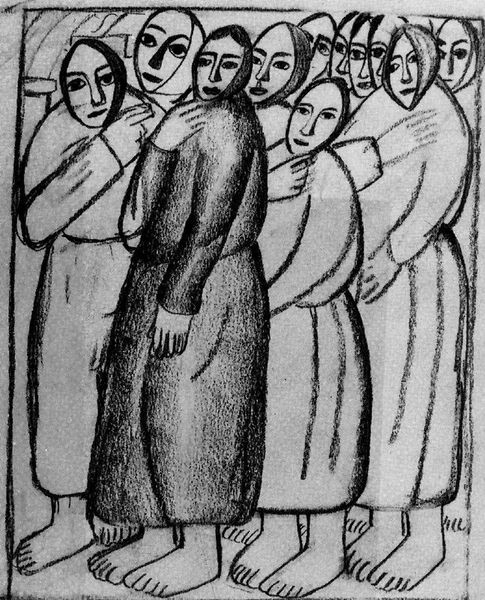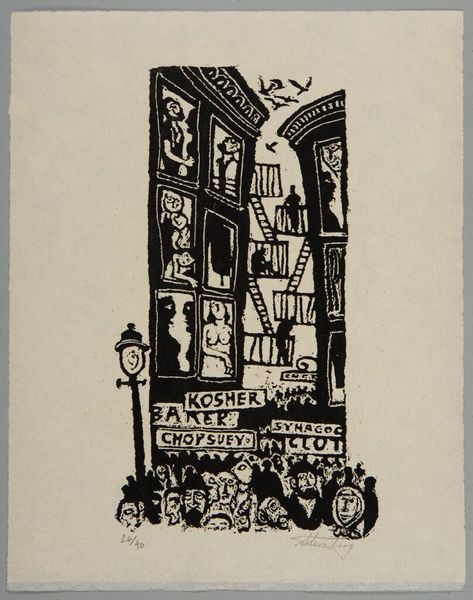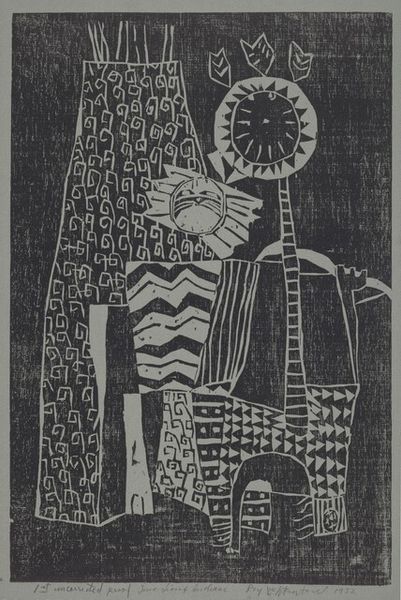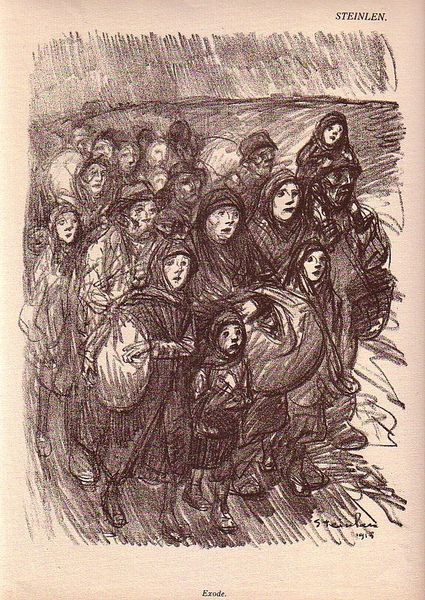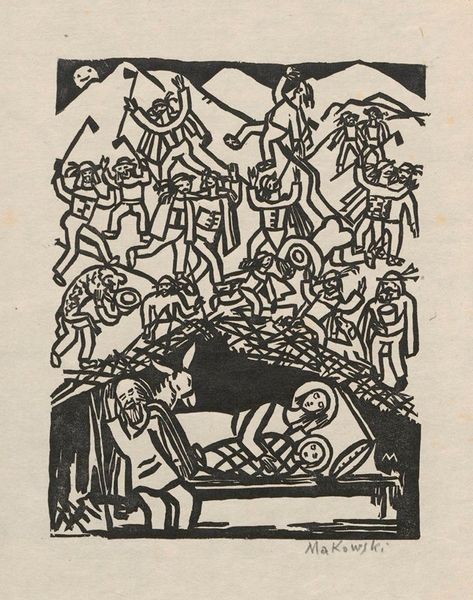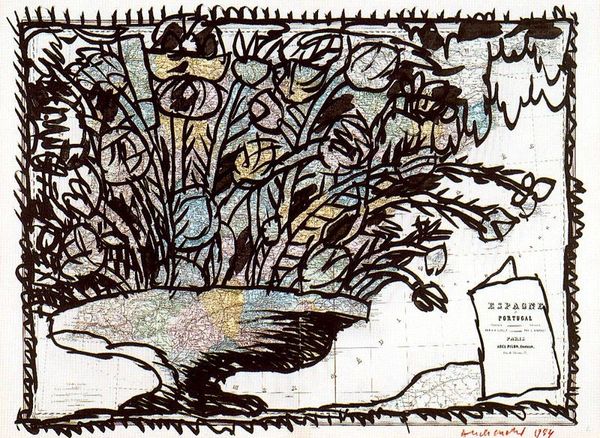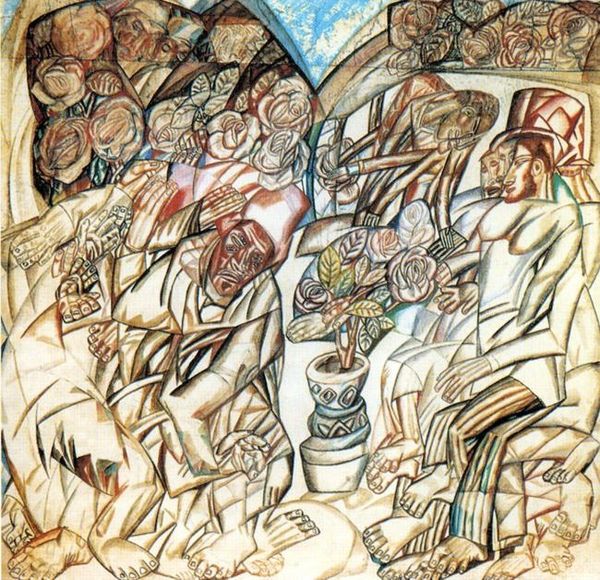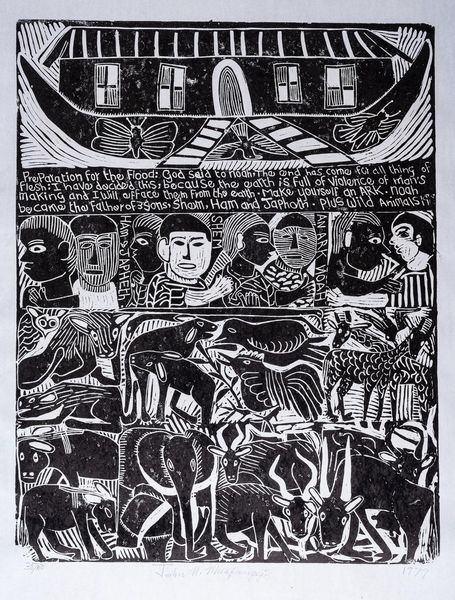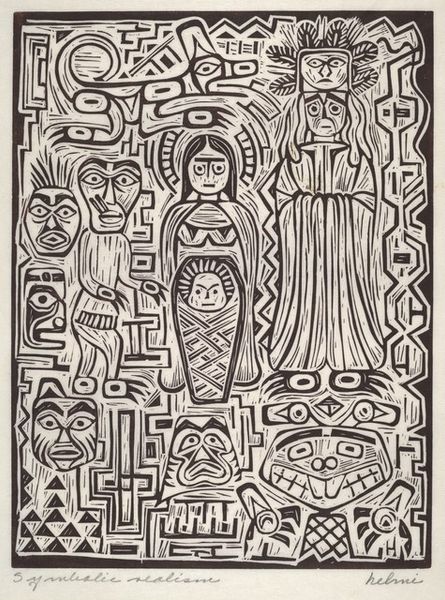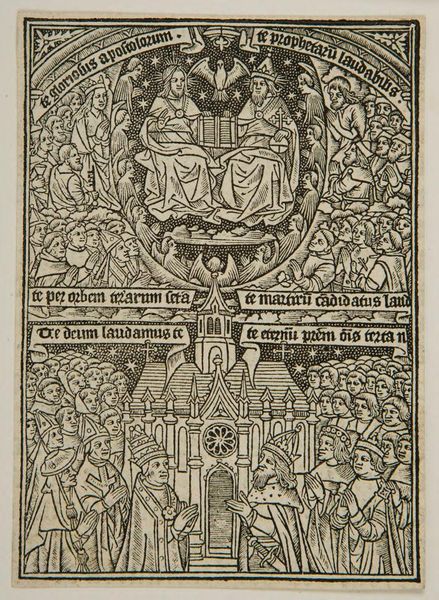
drawing, print, ink, pen
#
portrait
#
drawing
#
line-art
# print
#
pen illustration
#
book
#
figuration
#
ink line art
#
ink
#
line
#
pen
#
modernism
Dimensions: 100 x 70 cm
Copyright: Rafael Zabaleta,Fair Use
Editor: So this piece, "Tiscar Pilgrimage" by Rafael Zabaleta, appears to be an ink drawing, maybe also a print, with incredibly intricate linework. It feels both devotional and slightly unsettling to me. What elements of the composition really stand out for you? Curator: The piece is undoubtedly defined by the dominance of line, but I would direct attention to how that line generates form. Consider how Zabaleta uses hatching and contour to create a sense of depth despite the restricted palette. Note how the faces in particular display this technique; each is presented almost like a mask, a collection of geometric forms that only vaguely cohere as recognizable human features. Do you find a similar abstraction elsewhere? Editor: Yes, I see that in the treatment of the Virgin and Child figure at the top; the linear patterns on her robe almost dissolve her form. And even the architecture behind feels flattened by the density of the lines. Do you think this flattening is deliberate? Curator: Absolutely. This collapsing of depth serves to foreground the symbolic and decorative functions of the lines themselves. Ask yourself what effect that produces. By reducing representational depth, Zabaleta highlights the plane and calls attention to the drawing's materiality. Consider the impact of the repetition of linear motifs throughout the composition. How does this create visual unity or dissonance? Editor: That makes sense. I see a lot of the same wavy lines used on the clothing patterns are also used on the Virgin's canopy and even on the trees in the background. It does pull everything together, almost like a tapestry. I hadn't thought about it like that before! Curator: Precisely. By focusing on the interplay of line and form, we gain a greater understanding of Zabaleta's artistic intentions. The artwork invites us to engage with its visual vocabulary and appreciate its unique aesthetic language. Editor: Thank you! Looking closely at how the line creates the form gave me such a richer experience of viewing this drawing.
Comments
No comments
Be the first to comment and join the conversation on the ultimate creative platform.
